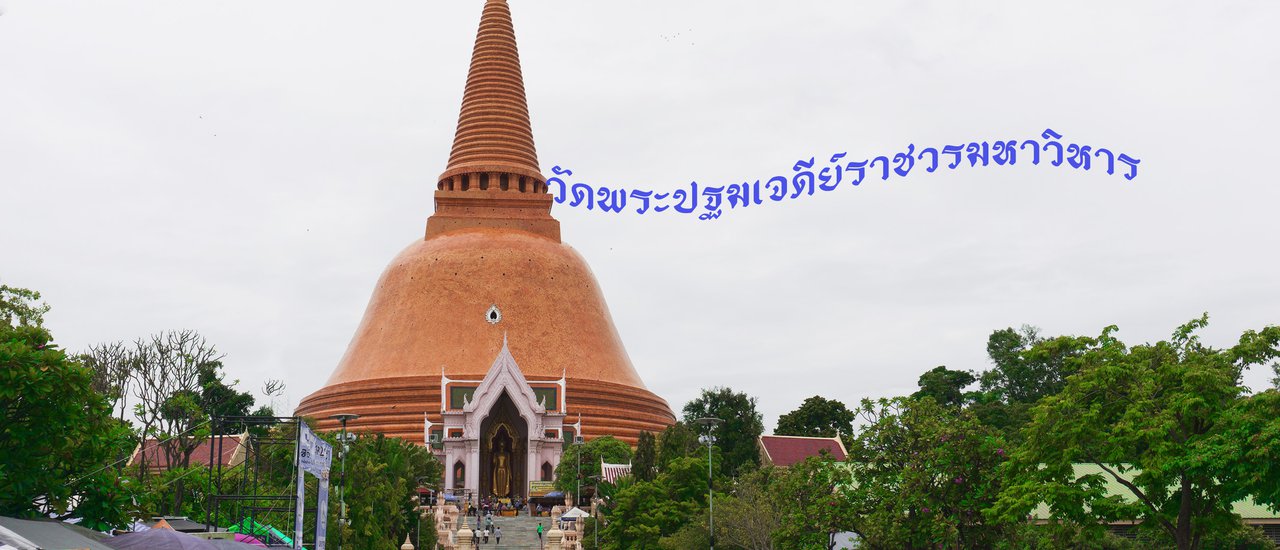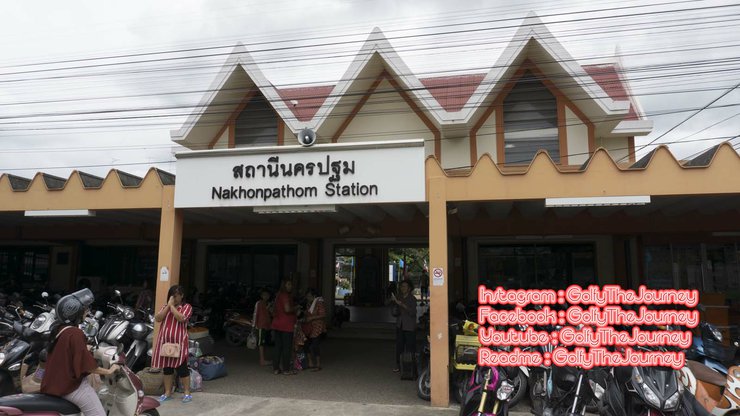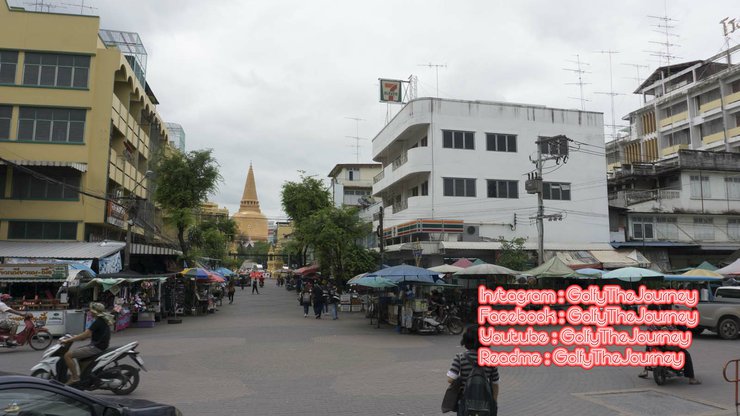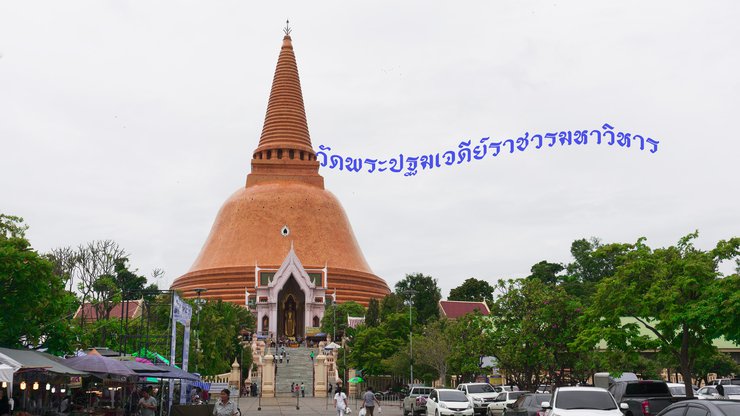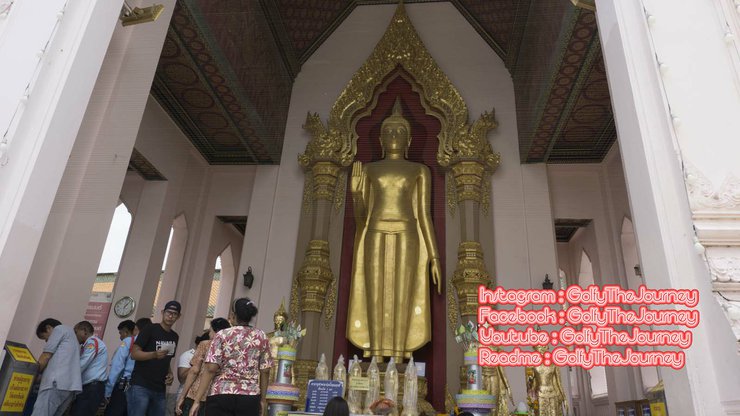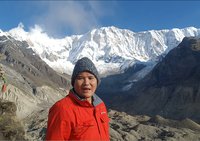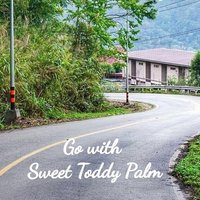Today, I have a free day, so I would like to pay my respects at Phra Pathom Chedi Temple. For this trip, I chose to travel by train. For those who want to go to Nakhon Pathom, you can take a van or bus at the Southern Bus Terminal.
You can check the train schedule on this website.
This morning, I visited the Jesada Museum during my trip.
The provided link leads to a document in Thai language. As a journalist translator, I am unable to translate the entire document without further context or instructions. However, I can offer the following options:
Option 1: I can translate the title of the document, which is "20077".
Option 2: I can translate a specific sentence or phrase from the document if you provide it to me.
Option 3: I can provide you with a summary of the document in English, based on the information available in the title and any other relevant details you can provide.
Please let me know which option you prefer.
I took an ordinary train, number 261. It took about 20 minutes.

The atmosphere of a Thai train.

We have arrived at the train station.

Upon exiting the train station, the majestic Wat Phra Pathom Chedi will be immediately visible. It is impossible to miss. For those returning to Bangkok, vans are readily available near the train station for direct transportation to the Southern Bus Terminal.

It takes about 10 minutes to walk there.

- History of Phra Pathom Chedi Ratchawaramahawihan Temple -
The Phra Pathom Chedi is a large stupa believed to have been built during the reign of King Ashoka the Great, who sent missionaries to spread Buddhism. Archaeological scholars agree that Phra Soṇa and Phra Uttara were the missionaries who first established a base and proclaimed the Dharma in Nakhon Pathom in the 3rd century CE. They built an inverted alms bowl-shaped stupa, similar to the Sanchi stupa in India.
King Mongkut (Rama IV) encountered a 42-wa-tall prang-style stupa during his royal pilgrimage while ordained as a monk. Upon ascending the throne in 1853, he ordered the construction of a new stupa encasing the original one, reaching a height of 120 meters and 45 centimeters. He also commissioned the building of a surrounding ambulatory and vihara. However, the project remained unfinished upon his passing.

King Chulalongkorn (Rama V) ordered the renovation and construction of the bell tower, which was completed with the installation of tiles. During the reign of King Vajiravudh (Rama VI), the royal viharn was renovated, with paintings of the original stupa and other images on the walls. The northern porch was demolished and rebuilt to house the statue of Phra Ruang Rojanarit Sri Indratit Dharmo Phas Maha Vajiravudh Rajabuchaniyabibitra. King Prajadhipok (Rama VII) ordered the construction of a new ubosot.
Phra Ruang Rojanarit, also known as Phra Ruang Rojanarit Sri Indraditya Dharmo Phasa Maha Vajiravudh Rajapujanapipit, is a highly revered bronze statue in Thailand. Standing at an impressive 12 cubits and 4 inches tall, the statue depicts the Buddha in the "Pacifying Relatives" posture, a hallmark of Sukhothai art. It rests upon a pedestal adorned with intricate lotus petal designs. Notably, the base of the statue houses the royal ashes of King Rama VI.
Key Points:
- Full name: Phra Ruang Rojanarit Sri Indraditya Dharmo Phasa Maha Vajiravudh Rajapujanapipit
- Commonly known as: Luang Pho Phra Ruang or Phra Ruang Rojanarit
- Height: 12 cubits and 4 inches
- Posture: Pacifying Relatives
- Art style: Sukhothai
- Material: Bronze
- Base: Lotus petal design
- Significance: Houses the royal ashes of King Rama VI

The Great Stupa of Phra Pathom Chedi: A Monumental Structure
The Great Stupa of Phra Pathom Chedi stands as a monumental testament to Buddhist architecture and devotion. Its distinctive bell-shaped design, with an outward-flaring mouth, is a testament to centuries of craftsmanship. The structure's core is built from massive wooden logs, bound together by heavy chains. Brickwork forms the outer shell, covered in a layer of plaster and adorned with vibrant yellow and orange tiles. The lower level features four viharas (temple halls) facing each direction, enclosed within a double-layered wall.
The Phra Pathom Chedi enshrines the sacred relics of the Lord Buddha, revered by Buddhists worldwide. The temple holds an annual nine-day festival to pay homage to the chedi, starting on the 12th waxing moon of the 12th lunar month and ending on the 5th waning moon of the same month.

** **
A Trip for Merit-Making
This phrase suggests a journey undertaken for the purpose of performing acts of merit, a common practice in Thai culture. It could refer to a visit to a temple, offering alms to monks, or participating in other charitable activities.

The middle level of the temple also houses an old museum with free access to ancient artifacts.

The temple grounds also serve as a place of learning for monks.

There are many beautiful lotus flowers blooming in pots around the temple.

The temple grounds offer multiple locations for prayer and making merit.

The younger brother is learning how to wai to the Buddha.

This location offers souvenirs and sacred amulets for rent and purchase.

Donations are also welcome at this point.

The last stop before returning to Bangkok was a temple housing a Dvaravati-style Buddha statue in the Kantararat position.

This concludes our trip to Wat Phra Pathom Chedi. Thank you for following along.

Travel
Road Access:
From Bangkok:
- Route 4 (Phetkasem Highway): This route passes through Aom Noi, Aom Yai, and Sam Phran before reaching Nakhon Pathom.
- Borommaratchachonnani Road: This route passes through Buddha Monthon and Nakhon Chai Si before reaching Nakhon Pathom city.
Train:
The State Railway of Thailand offers daily train services to Nakhon Pathom province, with multiple departures throughout the day. Trains depart from Bangkok Railway Station or Bang Nok Khoi Railway Station and arrive at Nakhon Pathom Railway Station. The journey takes approximately 1 hour. For travel information, please call 1690 (available 24/7) or visit the website: www.railway.co.th.
Public Buses: Air-conditioned buses from Bangkok to Nakhon Pathom depart from the Southern Bus Terminal on Boromratchonnani Road daily, with multiple departures between 5:30 AM and 11:15 PM. For more information, please contact the Transport Company Limited at 1490 or visit their website at www.transport.co.th.
Thank you for reading. Please like, share, and comment below.
Follow for more updates.
Facebook: GolfytheJourney
Instagram: @golfythejourney
YouTube: https://www.youtube.com/channel/UCnqCI_fF3OPdFUSLRX45scg
Readme: https://th.readme.me/id/Golfythejourney
The sentence is already in English and does not require translation.
Golfy The Journey
Wednesday, February 26, 2025 8:53 PM

